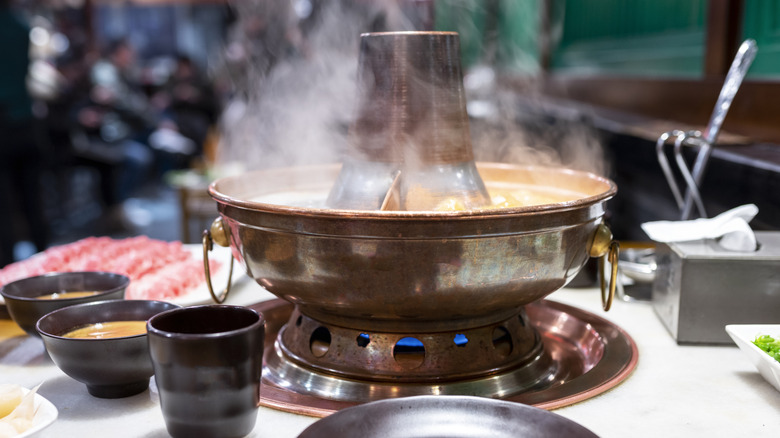The Chinese Seasoning That's So Spicy Its Name Literally Means 'Numbing'
We may receive a commission on purchases made from links.
If you are in a Sichuan restaurant and you order something that contains the word "mala" in its name, you have been forewarned. You will most likely experience a tingling sensation in your mouth and a fair amount of heat. After all, the name of the mala spice blend literally means "numbing" (ma) and "spicy" (la) in Chinese. The numbing sensation comes from Sichuan peppercorns (which are the star ingredient for aromatic chili) and the spiciness comes from Sichuan peppers. Other mala ingredients vary but are likely to include chili bean paste, clove, garlic, cardamon, fennel, ginger, cinnamon, and salt.
Just how numbing and spicy is mala? The numbing sensation of Sichuan peppercorns is caused by a chemical called hydroxy-α-sanshool, which can have an intense effect. According to a 2013 study published in The Proceedings of the Royal Society B, the tingling effect of the chemical on peoples' lips creates the same vibration frequency as the power grid in most parts of the world. Sichuan chili peppers, meanwhile, are considered to be moderately spicy. On the Scoville Heat Scale, which measures the spiciness of peppers through their amount of burning capsaicin, Sichuan chili peppers generate an average of 50,000 to 75,000 Scoville Heat Units (SHU). That puts this type of pepper on par with tabasco and cayenne peppers.
Use mala to bring flavor to hotpots and more
The moderate heat and intense numbing of mala bring a complexity of flavor to hotpots like Mala Tang's Hotpot. In fact, the development of hotpot restaurants throughout Southeast Asia is what helped the spice blend become more popular throughout the region. It is now widely consumed — and loved — in Asian countries besides, including Thailand, South Korea, and Singapore. As you might expect, mala is also a star ingredient of the famously spicy Szechuan cuisine.
In addition to hot pots, mala is also a great addition to soups, stir fries, and stews. Chefs have even started to use the spice blend as a barbeque rub or in sauces. In Asia, it is a common flavoring for snacks like potato chips and popcorn. Mala is also a great base for chili oil or for a dipping sauce. The good news is that mala is almost always included in the name of dishes using the blend. And, if you're feeling brave, you can even buy mala seasoning on Amazon and experiment yourself. But before digging in, remember: You have been warned.

